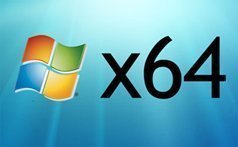Advantages of 64-bit Software
When there is a set number of bits associated with a computer CPU, that number refers to the total number of bits that the processor can use or transmit at once. For computer microprocessors, the number of bits also indicates how wide the computer registers are. 64 bit CPUs can address and process data that is represented by 64 bits as a result. When 64 bit computers were first released, a common issue that arose was the lack of 64-bit software that could take advantage of the new features available with the more capable hardware.
64-Bit Hardware Advantages
Before talking about the advantages of 64-bit software, it is necessary to review the new capabilities that 64-bit hardware provides. First, a 64-bit processor is not restricted to a relatively small amount of RAM that its 32-bit predecessors were (4 GB). It is able to support up to a terabyte (1,000 GB) of memory. Most 32-bit processors, however, did not have a motherboard that could support this much RAM, so computer users see a speed increase just by switching to a 64-bit machine without having specific software designed to run on the system.
64-Bit Software Advantages
For most home computer applications, 32-bit software and hardware provide sufficient processing power to suitably run web browsers, word processing, and other common programs. When a 64-bit computer has 64-bit software drivers installed, it has the advantage of performing at a significantly higher level than older CPUs when conducting video encoding, large database searches, and conducting scientific research. In the past, these tasks would utilize almost all of a computer’s memory, which is not the case on a 64-bit computer. Computer servers have been quicker to shift to 64-bit technology, in order to reduce computer latency for server response time on dynamic database queries made by web pages or applications. Additionally, 64-bit computer server software is now able to support a greater number of users, causing less money to be spent on server redundancy on large computer networks. Another advantage for 64-bit database system software is the application(s’) ability to conduct significantly more concurrent SQL or other requests at a given time. 64-bit software programs can now be written to be more scalable than their predecessors as well. For example, no longer do application developers have to give a limit on the memory that a program can use. Instead, they can dynamically check for free computer memory and use the percentage that is available, making the program more useful for a longer period of time. Finally, 64-bit software programs are more secure than their 32-bit predecessors. They cannot be attacked using the traditional buffer overrun technique that all 32-bit CPUs were open to. This is due to the manner in which arguments are passed to procedure calls on the microprocessor. Additionally, non-Microsoft components cannot modify the Microsoft operating system’s OS kernel, which helps to reduce the number of ways a computer hacker can gain access to the computer.


Comments - One Response to “Advantages of 64-bit Software”
Sorry but comments are closed at this time.